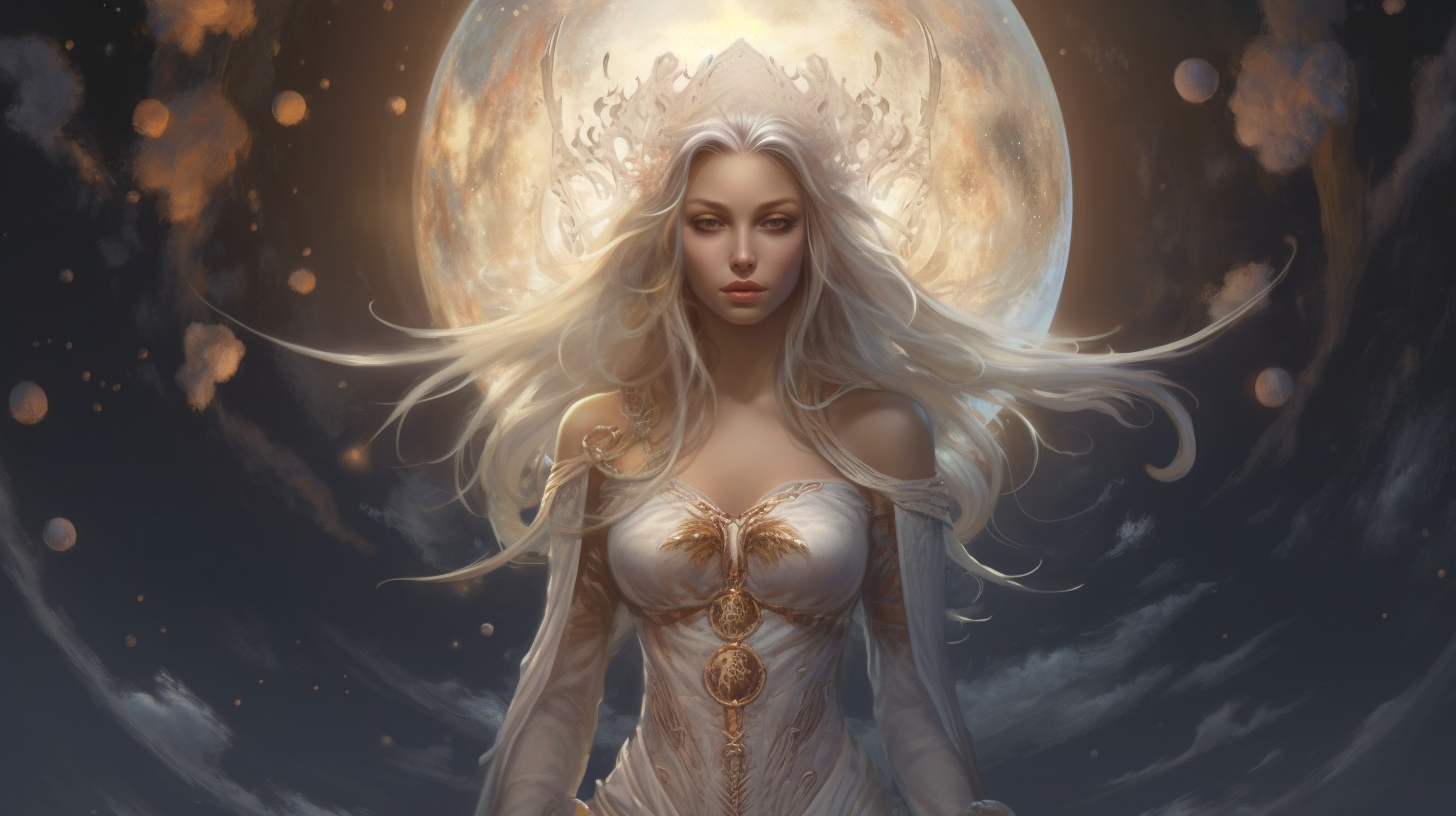An Initiation into the Expedition:
The Moon, with its mesmerizing silver radiance encircling our planet, has captivated humanity for ages, sparking imagination and inciting inquisitiveness. It has woven its way through countless myths, folklore, and cosmic sagas. Among these enthralling lunar chronicles lies the mysterious narrative of Luna, the Moon Goddess. Let us embark on a mystical odyssey through mythology to reveal the importance of Luna, the celestial entity presiding over the Moon.
Luna, the Puzzling Lunar Divinity:
In ancient tales, Luna stood as the revered deity of the Moon, worshipped by varied ancient civilizations worldwide. Known by different names such as Selene, Artemis, and Hecate, Luna embodied the divine essence of the Moon’s authority and dominion. Her luminous gleam illuminated the nocturnal heavens, while her mystery fueled the ingenuity of diverse cultures.

The Impact of Luna:
Extending beyond her celestial domain, Luna’s influence was profound. She was believed to govern the ebb and flow of tides, oversee the rhythms of fertility and growth, and regulate the enigmatic depths of the human psyche. Luna’s essence intertwined closely with nature, spirituality, and the divine feminine, often depicted as a nurturing and empathetic deity.
Depictions Across Cultures:
In ancient Greek lore, Luna emerged as Selene, traversing the celestial sphere in her silver chariot, casting her radiant light upon the earthly realm. As the sibling of Helios, the Sun God, she shared the eternal duty of illuminating the world beneath them. Selene’s nightly voyage symbolized the cyclic essence of life, death, and rebirth.
In Roman mythology, Luna embodied the Moon’s sway over earthly affairs. With a crescent-shaped headdress representing the lunar phases, Romans honored Luna through ceremonies and rituals, acknowledging her role in upholding cosmic balance.
Luna Within Diverse Traditions and Mystical Practices:
Transcending classical myths, Luna’s presence permeated religious and mystical rites. In Wiccan and pagan customs, Luna held a pivotal position embodying the divine feminine and symbolizing natural cycles. The lunar calendar played a critical role in determining auspicious timings for ceremonies and observances.
Additionally, Luna found her place in mystical realms of alchemy, astrology, and divination. The Moon’s positions and phases were believed to carry profound symbolic meanings, influencing human emotions, actions, and spiritual growth. Her symbolism adorned ancient talismans and amulets, offering protection and guidance to her followers.
Luna in Modern Interpretations:
While contemporary society has witnessed a wane in the reverence for Luna as a deity, her essence continues to reverberate in various aspects of modern culture. Lunar motifs embellish literature, art, and even mainstream music. The Moon’s enigmatic charm remains a wellspring of inspiration for poets, artists, and dreamers, evoking wonder and fascination.
Scholarly Pursuits and Luna:
Beyond folklore and legend, Luna’s influence transcends into scientific exploration. Human curiosity and technological progress have driven us to venture beyond Earth’s confines, culminating in groundbreaking Apollo lunar missions. These pioneering journeys not only enriched our scientific understanding but also heralded a new epoch of lunar revelation.
Parting Musings:
Luna, the Moon Goddess, stands tall as a symbol of enigma, grandeur, and spiritual communion. Across diverse cultures and epochs, humanity has marveled at the Moon’s transformative influence, attributing it to the divine entity known as Luna. Whether as Selene, Artemis, or Hecate, the lunar deity persists in etching its mark on our collective consciousness. As we gaze at the night sky, beholding the Moon’s radiance, we are reminded of Luna’s everlasting enchantment, perpetuating the legacy of the Moon Goddess.
